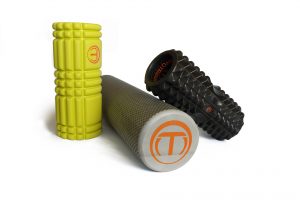 The main muscles affected by hunching over on phones, tablets and computers are the ones around the shoulders, upper back and clavicular area. This is going to include chronic loosening and weakening of the rotator cuff, rhomboids, traps, and posterior deltoids. This will also promote tightening of the biceps, anterior deltoids, lats, serratus, and pectorals, and will produce excess strain on the neck extensors.
The main muscles affected by hunching over on phones, tablets and computers are the ones around the shoulders, upper back and clavicular area. This is going to include chronic loosening and weakening of the rotator cuff, rhomboids, traps, and posterior deltoids. This will also promote tightening of the biceps, anterior deltoids, lats, serratus, and pectorals, and will produce excess strain on the neck extensors.
On top of the musculoskeletal effects, it can also place on strain on breathing properly as the auxiliary breathing muscles in the neck can be stressed. As well as creating a different shape of the torso, after many years of this posture, it can make it hard to open up the chest and take a full breath. Also, having the neck muscles under chronic tension can cause headaches, neck pain, chest pain, dizziness, and I have even had a few clients who went to the dentist because they thought they had a cavity only to find out that it was muscle tension in the neck and was eventually fixed by a massage.
It becomes important to pay attention to how much time you are spending one these devices and how you are slumping or hunching over. Some devices, such as a cell phone, are harder to find a proper posture position just because of the pure size of the device; however, changing daily habits from the phone to a more ergonomically set up computer at a desk may be an alternative. Using a Bluetooth headset for phone conversations, and things like Siri can also decrease the time you need to spend in a hunched over position as now you do not have to hold the phone up to your ear or in front of your face for prolonged periods of time. While some of it can be modified from a positional standpoint, limiting time spent on phones or tablets may be the best choice as some positions are just unavoidable. For a tablet or laptop, try to make sure it is set up in the most ergonomic position as possible; propping the tablet in front of you on something, or setting up the laptop at head height to avoid excessive neck strain.
As a Corrective Exercise Specialist, one of the first suggestions I make to my clients is to try to set a timer to develop a habit of getting up and stretching every 20 minutes or so. The longer a muscle stays in a stretched position, the more likely it is that the muscle length change will be permanent. Therefore, making an effort to get up and stretch more frequently can help offset some of the effects.
For muscle activation, I recommend my clients hip hinge to about a 45 degree angle, and perform a “Y” exercise, where they bring their arms up in front of their body in a Y position while bent over to engage the posterior deltoids, lower trap muscles, and rhomboids. This will keep these muscles strong and active, which can help prevent posture degradation.
There are two main stretches I recommend for counteracting the “device posture” as well. The first is a chest stretch that can be performed by putting your forearms on a doorframe, and trying to push your body forward through the doorway. The second is to (if you are tall enough) grab the top of the door frame and try to push the chest down towards the floor. If you are not tall enough, a high counter or a sturdy towel rack can also be a good grappling point. This will stretch the lats and serratus muscles which, when tight, are also responsible for poor posture.
 I recommend foam rolling your upper back with your arms overhead trying to touch your hands to the ground as a great starting point. This will help to keep the muscles more supple, and also helps to put the thoracic spine back in a better position and stretch it the opposite way. For more severe cases such as headaches, toothaches, and neck pain, you may have to limit your time spent on devices for a while, as well as schedule a deep tissue massage to settle down any trigger points that may be causing pain. However, getting massages alone without proper habit modification, stretching and strengthening can be an uphill battle as the muscles will usually revert to a tense position as soon as the stimulus is put back in place. I work with and educate all of my clients to prevent and correct posture imbalances that can be causing them issues, and working with a qualified professional is the best route to go to make sure you are doing the right things to correct everything properly.
I recommend foam rolling your upper back with your arms overhead trying to touch your hands to the ground as a great starting point. This will help to keep the muscles more supple, and also helps to put the thoracic spine back in a better position and stretch it the opposite way. For more severe cases such as headaches, toothaches, and neck pain, you may have to limit your time spent on devices for a while, as well as schedule a deep tissue massage to settle down any trigger points that may be causing pain. However, getting massages alone without proper habit modification, stretching and strengthening can be an uphill battle as the muscles will usually revert to a tense position as soon as the stimulus is put back in place. I work with and educate all of my clients to prevent and correct posture imbalances that can be causing them issues, and working with a qualified professional is the best route to go to make sure you are doing the right things to correct everything properly.